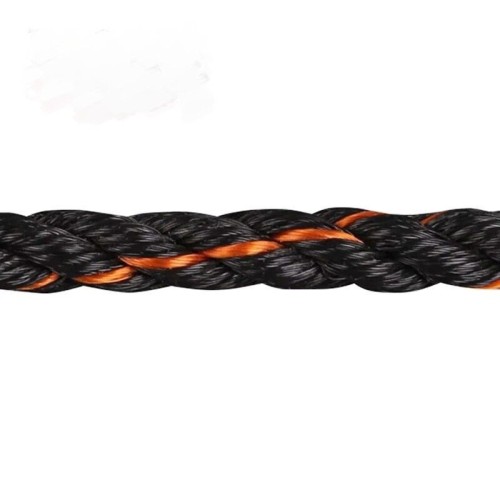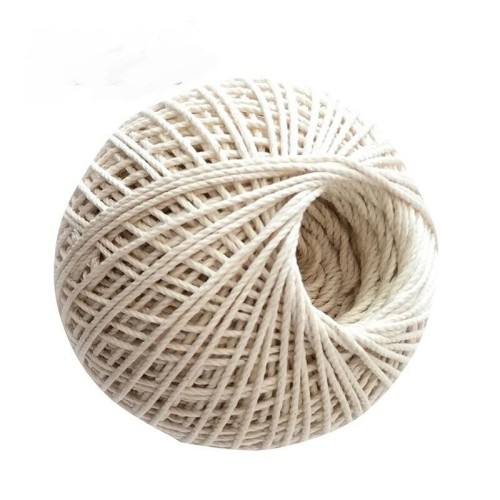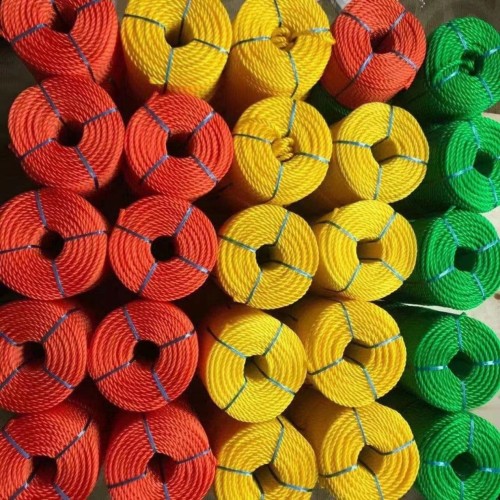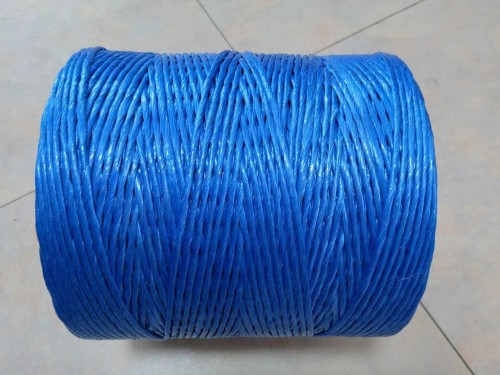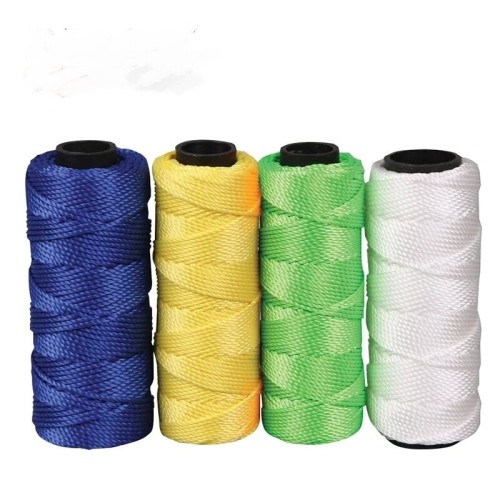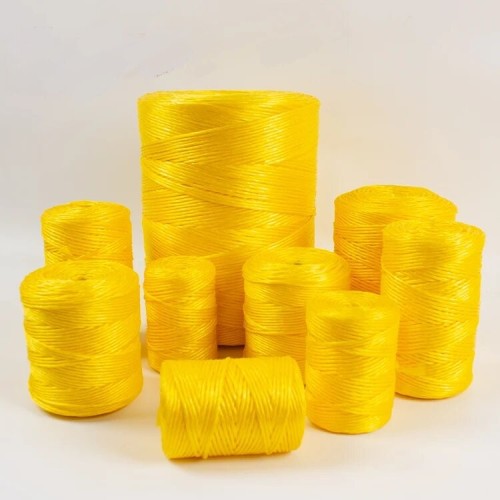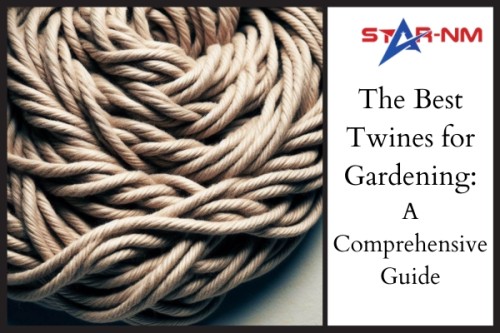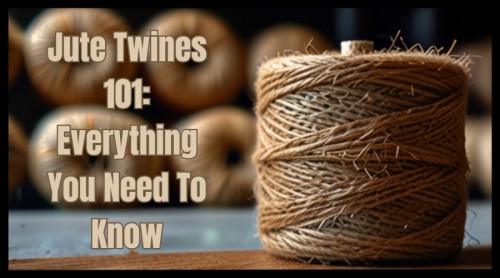Jute twines have been a cornerstone in various industries and households for centuries. These natural fibers have recently gained significant popularity due to their sustainable and eco-friendly nature. Whether you're a gardening enthusiast, a craftsperson, or someone interested in sustainable living, jute twines have many applications that cater to your needs. This comprehensive guide explores everything you need about jute twines, from their origins and production to their diverse uses and benefits.
What is Jute?
Jute is a natural fiber derived from the stems of the jute plant, primarily Corchorus olitorius and Corchorus capsularis. Native to the Indian subcontinent, jute is one of the most affordable and abundant natural fibers available. Known for its strength, versatility, and biodegradability, jute is often called the "golden fiber" due to its color and value.
The History of Jute
Jute's history dates back to ancient times, with evidence suggesting its use in the Indus Valley Civilization. Traditionally used for making ropes, sacks, and utilitarian items, jute's importance surged during the British colonial era when it became a primary export product from Bengal. Today, India and Bangladesh are the largest producers of jute, supplying the global market with high-quality fibers.
How Jute Twines Are Made
The production of jute twines involves several steps:
1. Harvesting
Jute plants are harvested at total growth, usually within 120 days of planting. The plants are cut close to the ground and bundled for processing.
2. Retting
The harvested stems are submerged in water for a few weeks to loosen the fibers from the stalks. This process, known as retting, allows the fibers to be easily separated.
3. Stripping
After retting, the jute fibers are stripped from the stalks by hand. The fibers are then washed and dried.
4. Spinning
The dried fibers are spun into yarn or twine using traditional or mechanical methods. This step determines the thickness and strength of the final product.
5. Twisting and Twining
The spun yarn is twisted into twine of varying thicknesses, depending on its intended use. The twine is then wound into coils or spools for packaging and distribution.
Types of Jute Twines
Jute twines come in various types, each suited for different applications:
1. Single Ply Twine
Single-ply jute twine has one fiber strand, making it thinner and more flexible. It's ideal for light-duty tasks such as crafting and bundling.
2. Two Ply Twine
Two-ply jute twine has two twisted strands, offering more strength and durability. It's commonly used in gardening, packaging, and DIY projects.
3. Three Ply Twine
Three-ply jute twine, with three strands twisted together, provides maximum strength and thickness. It's perfect for heavy-duty applications like binding heavy objects and construction.
Benefits of Using Jute Twines
1. Eco-Friendly
Jute twines are 100% biodegradable and compostable, making them an excellent choice for environmentally conscious consumers. Unlike synthetic alternatives, jute does not contribute to plastic pollution.
2. Strong and Durable
Despite being a natural fiber, jute is solid and durable. It can withstand significant weight and tension, making it reliable for various tasks.
3. Cost-Effective
Jute is one of the most affordable natural fibers, providing an economical solution for various applications. Its production process is also less resource-intensive than that of synthetic fibers.
4. Versatile
From gardening and crafting to packaging and construction, jute twines are incredibly versatile. Their natural look also adds an aesthetic appeal to many projects.
5. UV Resistant
Jute fibers naturally resist UV light, making them suitable for outdoor use without significant degradation over time.
Common Uses of Jute Twines
1. Gardening
Jute twines are widely used in gardening for tasks such as tying plants, supporting vines, and bundling garden produce. Their biodegradability ensures that they won't harm the soil.
2. Crafting
Craft enthusiasts often use jute twines in various projects, including macramé, jewelry making, and home décor. The natural texture and appearance of jute add a rustic charm to crafts.
3. Packaging
Jute twines are a popular choice for eco-friendly packaging solutions. They are used to tie parcels, secure boxes, and even decorate gift wrapping.
4. Construction
Jute twines are binding materials in construction, particularly in masonry and scaffolding. Their strength and durability make them suitable for securing heavy materials.
5. Agriculture
Farmers use jute twines to bundle crops, tie livestock, and create natural fencing. Their biodegradability prevents their contribution to environmental pollution.
6. Home Use
Jute twines are handy for household tasks, including organizing items, securing bags, and even as a makeshift clothesline.
How to Choose the Right Jute Twine
When selecting jute twine for a specific purpose, consider the following factors:
1. Thickness
The thickness of the twine determines its strength and flexibility. Choose thinner twines for light-duty tasks and thicker ones for heavy-duty applications.
2. Length
Jute twines are available in various lengths. Determine how much twine you need for your project to avoid wastage.
3. Ply
The number of plies indicates the strength of the twine. Single-ply twine is suitable for delicate tasks, while two—or three-ply twines are better for more demanding uses.
4. Quality
Look for high-quality jute twine with consistent thickness and minimal fraying. This ensures durability and reliability for your projects.
5. Source
Consider purchasing jute twine from reputable sources that adhere to sustainable and ethical production practices. This supports eco-friendly initiatives and ensures high-quality products.
Caring for Jute Twines
Proper care extends the lifespan of your jute twines:
1. Storage
Store jute twines in a dry, cool place away from direct sunlight to prevent degradation. Use sealed containers or bags to protect them from moisture and pests.
2. Handling
Handle jute twines gently to avoid fraying and breakage. When cutting, use sharp scissors or a knife to ensure clean edges.
3. Cleaning
If your jute twine gets dirty, clean it with a damp cloth. Avoid soaking it in water, as prolonged exposure to moisture can weaken the fibers.
DIY Projects Using Jute Twines
1. Macramé Plant Hanger
Create a stylish macramé plant hanger using jute twine. Its natural look complements indoor plants, adding a touch of bohemian charm to your décor.
2. Rustic Picture Frame
Wrap jute twine around an old picture frame to give it a rustic makeover. This simple DIY project adds a cozy, farmhouse vibe to any room.
3. Gift Wrapping
Use jute twine to wrap gifts for a natural, eco-friendly touch. Pair it with recycled paper and dried flowers for an extra special presentation.
4. Homemade Soap Packaging
Bundle homemade soap bars with jute twine and a small tag for a thoughtful, handmade gift. The twine adds a rustic elegance to your packaging.
5. Garden Trellis
Construct a simple garden trellis using jute twine and wooden stakes. This supports climbing plants like tomatoes and cucumbers while blending seamlessly into your garden.
The Future of Jute Twines
As sustainability becomes a growing concern, the demand for natural, eco-friendly products like jute twines is expected to increase. Innovations in jute cultivation and processing will likely improve the quality and applications of jute products. Researchers are exploring ways to enhance jute's properties, making it more durable and versatile. Additionally, promoting fair trade practices in the jute industry can lead to better livelihoods for farmers and workers, fostering a more equitable and sustainable supply chain.
Conclusion
Jute twines are a versatile, eco-friendly, cost-effective solution for many applications. From their historical significance to their modern-day uses, jute twines have proven to be an invaluable resource. Whether gardening, crafting, packaging, or building, jute twines offer a reliable and sustainable option. By choosing jute twines, you're getting a durable and versatile product and contributing to a greener and more sustainable future. Embrace the natural charm and practicality of jute twines in your everyday projects and enjoy the benefits of this remarkable golden fiber.
















